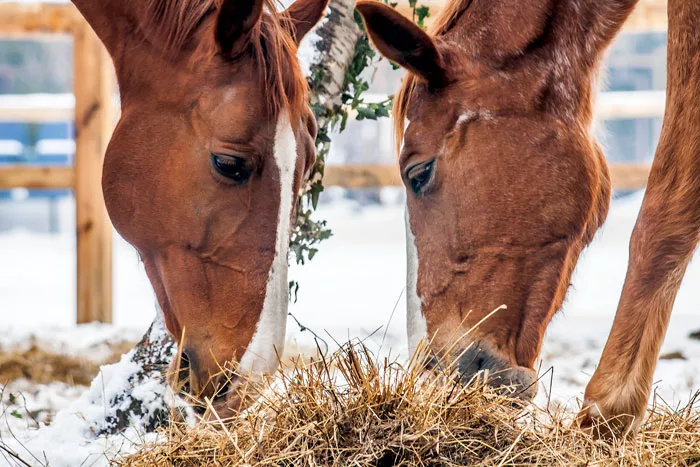American Farriers Journal
American Farriers Journal is the “hands-on” magazine for professional farriers, equine veterinarians and horse care product and service buyers.

Switching from pasture grass to hay is often the prime factor that leads to loss of body condition during the winter. Tonovavania
A horse’s nutrition needs can change significantly as the seasons come and go. This is due to higher temperatures, as well as the type of nutrition a horse is getting — and needs — during the summer vs. the winter months
When the lush grass is no longer available and temperatures plummet, a horse’s dietary needs are affected.
The switch from pasture grass to hay is often the prime factor leading to loss of body condition during the winter.
“Hay is typically less calorie-dense than pasture grass,” explains Scott Gravlee, DVM, CNS, and equine nutrition consultant at Life Data Labs. “The cold weather also increases a horse’s metabolic demands to stay warm. If there are insufficient calories in the diet, horses will burn their fat reserves to satisfy the increased calorie demand.”
During summer months, carotene is found in fresh pasture grass and converted to retinol in the horse’s digestive tract.
“Retinol is the active form of vitamin A,” Gravlee says. “The carotene content of hay decreases over 50% within a few days following harvest, while other vitamins, such as vitamin E, deteriorate at rates as high as 7-10% per month.”
In addition, the lower temperatures also play a role in how a horse’s dietary needs change in…